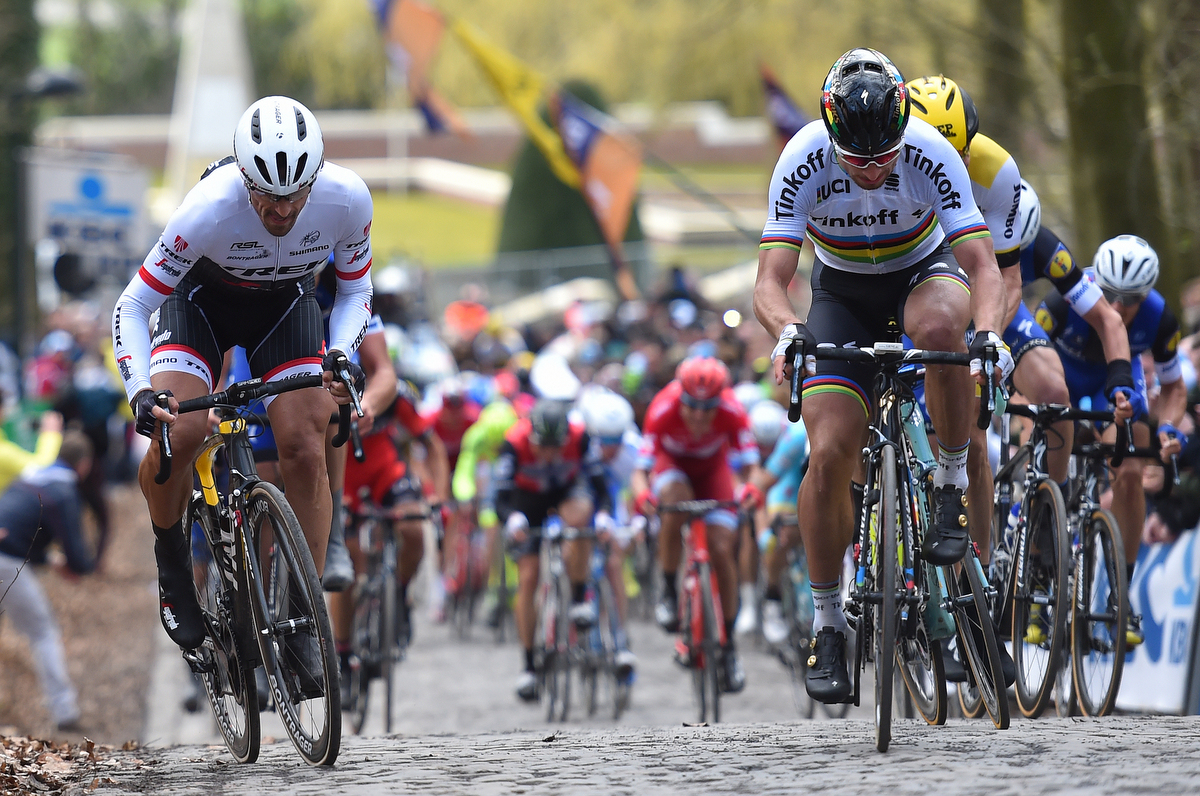
The Kemmelberg is a cobbled climb that forms the final selection at Gent-Wevelgem, one of the major Spring Classics.
The super-steep gradients never fail to light up the action and, with some 30km still to race into Wevelgem, it often leaves the races - both men's and women's - finely poised between the attackers and sprinters.
The Kemmelberg is found away from the Flemish Ardennes that play host to most of the Belgian cobbled Classics, taking the riders out towards the French border in West Flanders.
That area played host to much of the fighting in World War One, the memory of which has formed an increasingly central part of the modern identity of Gent-Wevelgem, which carries the moniker 'In Flanders Fields'.
War graves abound, the Menin Gate forms a symbolic archway to the race's finale, and the gravel 'plugstreets' pass old battlegrounds and the Christmas Truce memorial. The Kemmelberg is also steeped in war history, forming a key strategic point of high ground – at 156m it's the highest point of West Flanders – as it juts up above the village of Kemmel.
As such, it was the scene of a number of battles between German and Allied forces during the war, notably towards the end of the conflict.
The Kemmelberg has been used in Gent-Wevelgem since 1955, becoming the key climb in the finale from 1962. It has also featured in numerous other races, including the Three Days of De Panne, Four Days of Dunkirk, Handzame Classic, Eurométropole Tour, Great War Remembrance Race, and even the World Championship in 1950.
There are three sides to the Kemmelberg: conjoining roads from the east and west, and a lesser-spotted tarmacked ascent from the south. All three have featured in Gent-Wevelgem, but it's the ascent from the west (Ossuaire) that is best known, coming as the final climb before the long run-in.
It starts gently, dragging up before the cobbles begin as the race enters the trees. From there, it ratchets up steadily to a stinging 23% in the final 200 metres of the 800m total. The cobbles are also some of the roughest around, and gaps can open up in the space of a few pedal strokes.
The opposite side of the Kemmelberg - the Belvedere ascent to the west - is a shorter climb at 500 metres, and just as brutal because of it, with similar gradients topping 20%.
The modern iteration of Gent-Wevelgem has recently included both climbs, but the eastern approach naturally sees less action due to being earlier in the race.
The real drama comes when the peloton approach from the west with just over 30km to race, with Classics specialists looking to power clear and split the race into a small group, hopefully dropping the faster sprinters. Over the top, they descend the Belvedere side, which given its gradient is a sharp and treacherous drop - which has caused controversy in the past.
From there, a long and often wind-swept run to Wevelgem remains, where the dynamics between the different groups created by the Kemmelberg make for an entertaining finale. Whereas Gent-Wevelgem used to be known as a sprinter's Classic, it has increasingly tended to more selective racing over the Kemmelberg.







